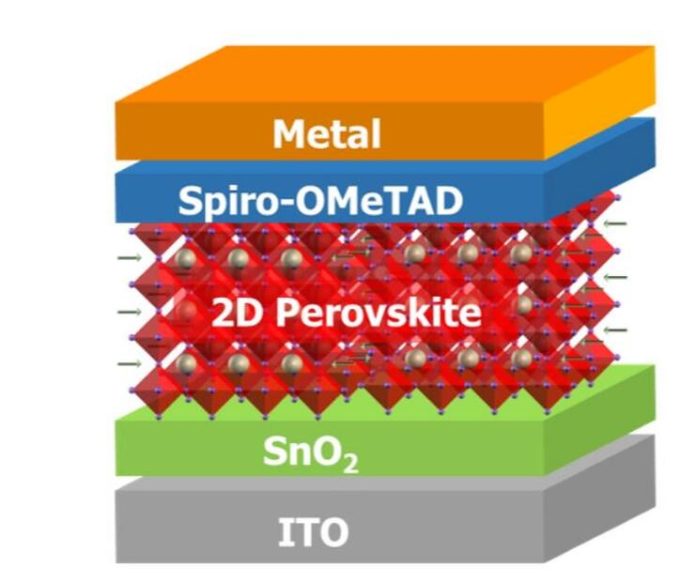Scientists at Zhengzhou University in China have designed a solar cell based on low-dimensional Ruddlesden-Popper (LPDR) perovskite that reportedly features improved carrier transport properties.
“Compared to the regular 3D perovskite solar cells, these cells are more stable,” researcher Yiqiang Zhang told pv magazine. “They are suitable for building-integrated photovoltaics (BIPV), conventional solar, and wearable devices, featuring long device stability.”
Ruddlesden-Popper perovskites have often improved stability against humidity and lower encapsulation costs. One of their first applications will likely be as top-layer for conventional perovskite solar cells.
The researchers used a LDRP based on γ-aminobutyric acid (GABA) as the organic spacer cation and a type of lead-halide perovskite known as methylammonium lead iodide (MAPbI3).
“The GABA-MAPbI3 film delivers an improved carrier mobility of 1.61 cm2 Vand charge (electron and hole) diffusion length over 700 nm,” they stated.
The cell configuration comprises an indium tin oxide (ITO) substrate, a tin(IV) oxide (SnO2) buffer layer, the 2D perovskite absorber, a spiro-OMeTAD hole-blocking layer, and a metal contact. The Chinese team said the use of the LDPR results in a cell’s power conversion efficiency of 18.73%, which compares to 16.14% in a reference device without the addition of GABA.
“In addition, the start-of-art devices exhibit outstanding stability under continuous illumination, ambient atmosphere, 65 C, and 85% relative humidity, respectively. We speculate that the electrons of GABA can push the excitonic states outward from the band tails via hydrogen-bonding interaction.”
The scientists claim that hydrogen-bonding interactions between the carboxyl groups of the bilayer GABA spacer cations bridge the charge transfer channel, while also promoting the optimization of the energy band structure responsible for the light absorption.
They described the cell tech in “Dredging the Charge-Carrier Transfer Pathway for Efficient Low-Dimensional Ruddlesden-Popper Perovskite Solar Cells,” which was recently published in Angewandte Chemie.
“The potential production costs are comparable to the regular 3D perovskite solar cells, which is lower than the commercialized silicon cells,” Zhang concluded.






